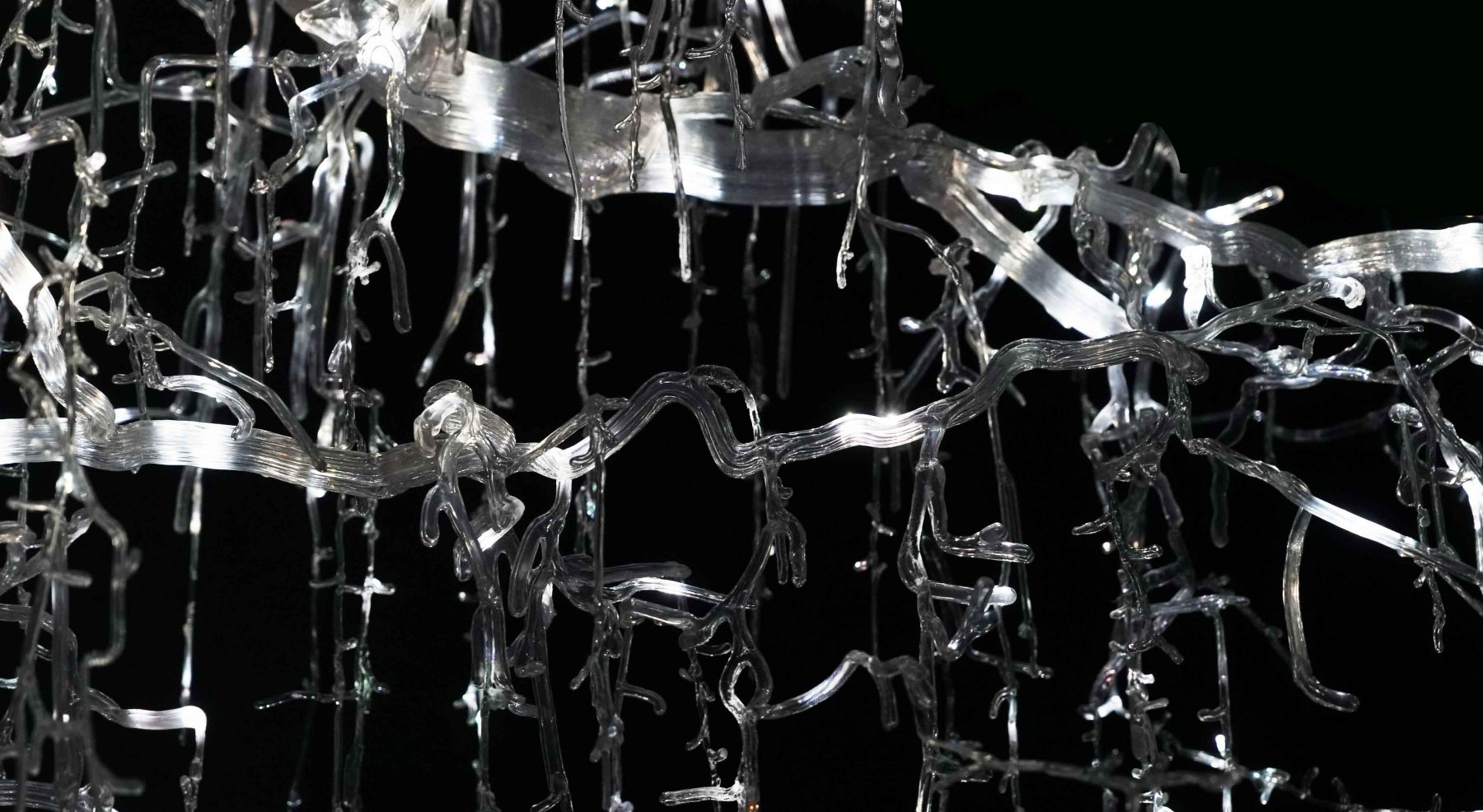Interview Silvia Iacovcich
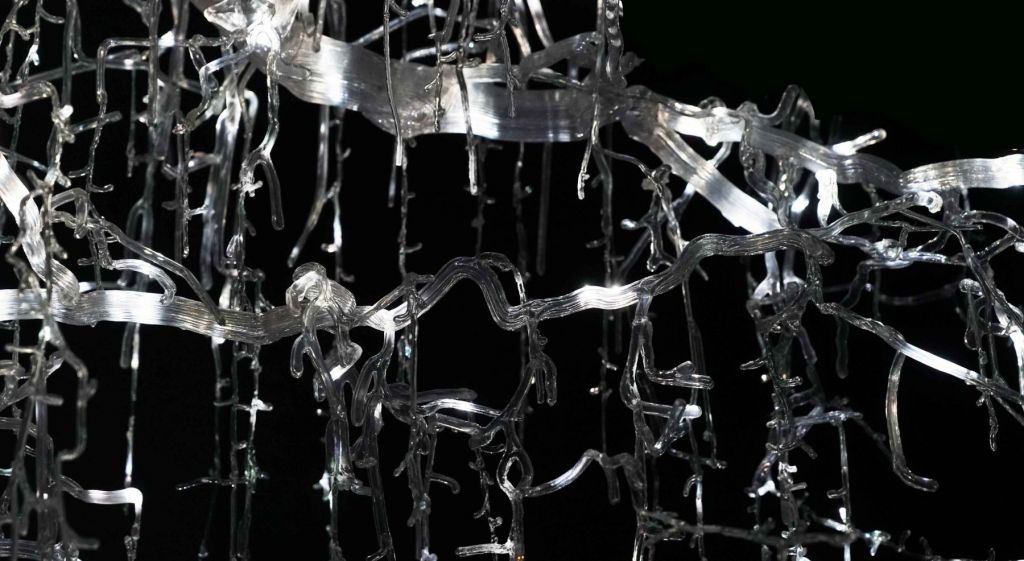
Merging science and art to analyse our society’s complex interrelation with nature, ecoartist Thijs Biersteker presents Econtinuum (2020), a sensory installation which allows us to understand more about the ecosystem we inhabit – and, consequently, to improve ourselves.
Designed together with botanist and pioneer of plant neurobiology Stefano Mancuso, Econtinuum is an interactive sculpture of a tree root built from an AI matrix. The giant transparent tubes form an intricate reticulum that captures data through sensors installed in the room, simulating the intelligent symbiotic relationship between plants as it would happen underneath a forest floor.
By observing how trees share and communicate important information (like sharing nutrients or warning each other), we also influence their learning process, implementing the data transmission, which is in constant update. Translating nature’s language and making data accessible, Biersteker, founder of Woven Studio, explains what happens in the botanical world. At the same time, we are busy with our own lives – an echo we can’t fully perceive but which is crucial to our existence.
In this sense, Econtinuum looks like a post-cursor to the immersive Voice Of Nature (2018), which uses real-time information extrapolated from a plant ring, and shows how the ecosystem is affected by climate change in Chengdu, China. Both artworks focus on how we can positively refresh our relationship with nature by cultivating beneficial connections and becoming aware of its vital signals.
Biersteker’s works urge us to take responsibility for what we miscounted, inviting us to reflect on the impact over pressing issues – global warming, deforestation, and air and ocean pollution. Plastic Reflectic (2016) is a kinetic mirror where we identify with a newly distorted plastic-pixeled reflection of ourselves. Analysing the effect, PVC has on our food chain, we physically reinstate the conceptual belief that ‘we are what we eat’.
In Shaded Seas (2019), the artist suggests an immediate and constructive adjustment of our daily behavioural patterns through a sensory installation that concretely makes our own hands at fault for what’s poisoning the waters. This idea is also evoked in Pollutive Ends (2019), where we are forced to face the deleterious cause-effect chain a single cigarette has on our entire ecosystem.
Using kinetic motion, Artificial Intelligence, big data visualisation, and Virtual Reality as a variegated colour palette, Thijs Bierkestener introduces us to a universe of possibilities where we can choose to interact with dark matter (Dark Distortion, 2020), and experiment with brainwaves reaching a new insight into our extrasensory perceptions (Mind Over Matter, 2018); but also examine social issues like immigration through a virtual reality journey (Run Like A Refugee, 2015), or contemplate new original directions over the usage of data itself (Periscopista, 2015).
As a result, we believe the information exposed because we are empirically witnessing it. In this new dimension, art is a portal that shapes the intangible into a familiar feeling, forcing us to envisage a world where our actions are integral to positive change. It is a vision of a collective approach towards ecology where healing the world starts by making ourselves its primary cure.
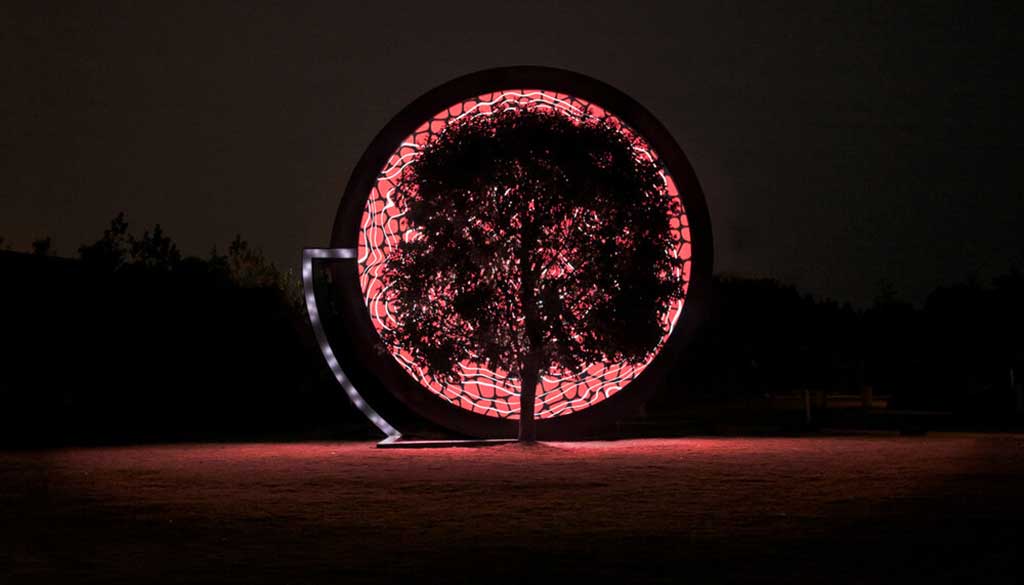
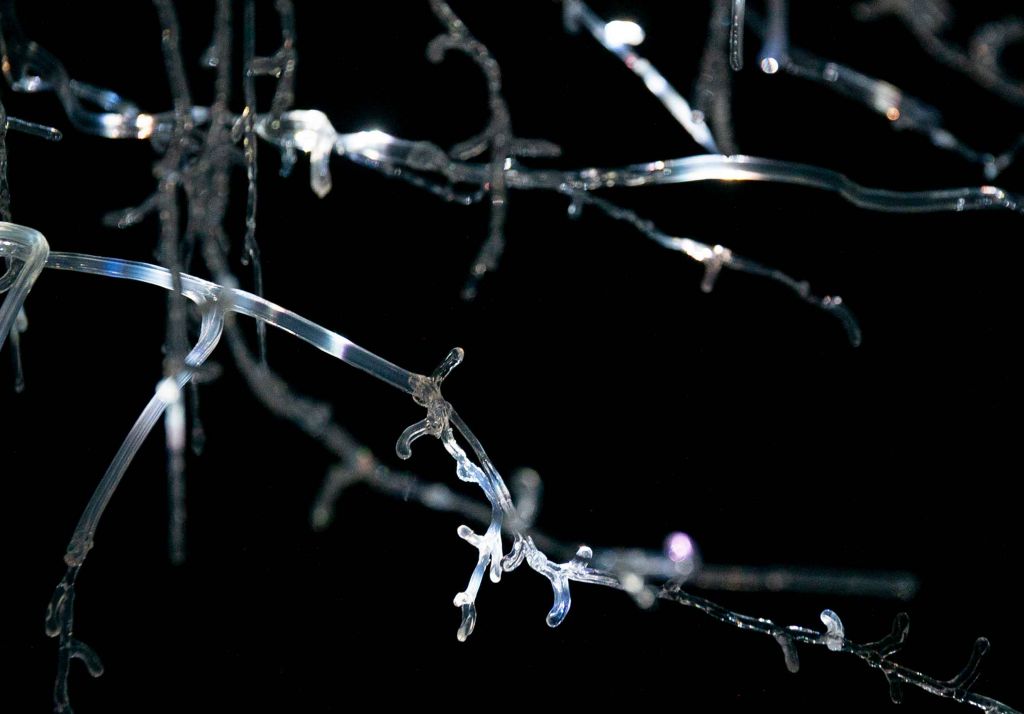
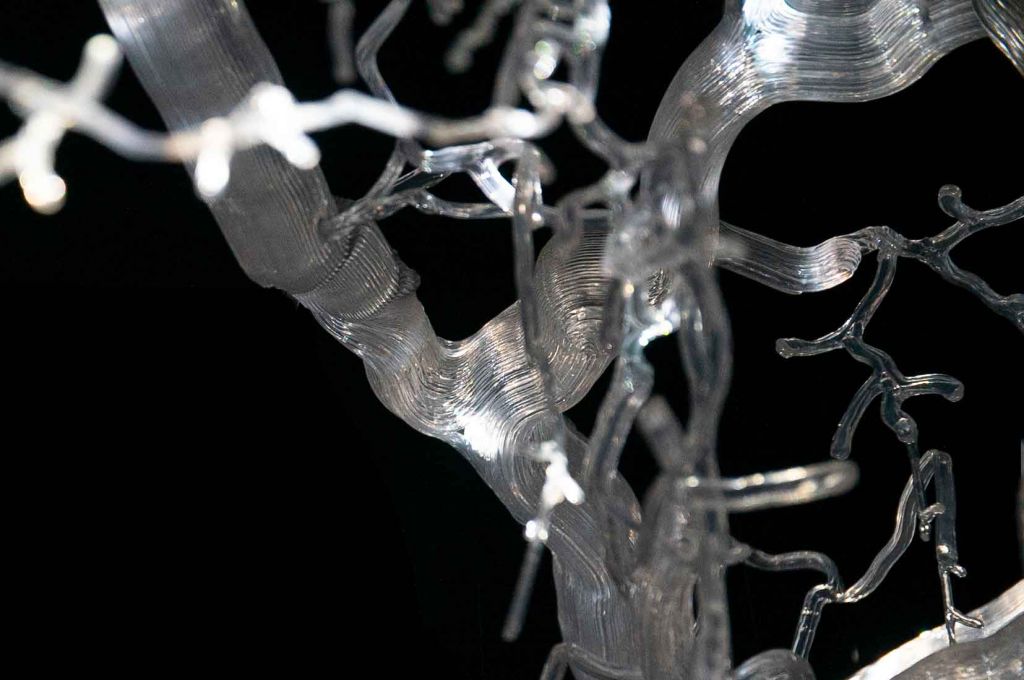
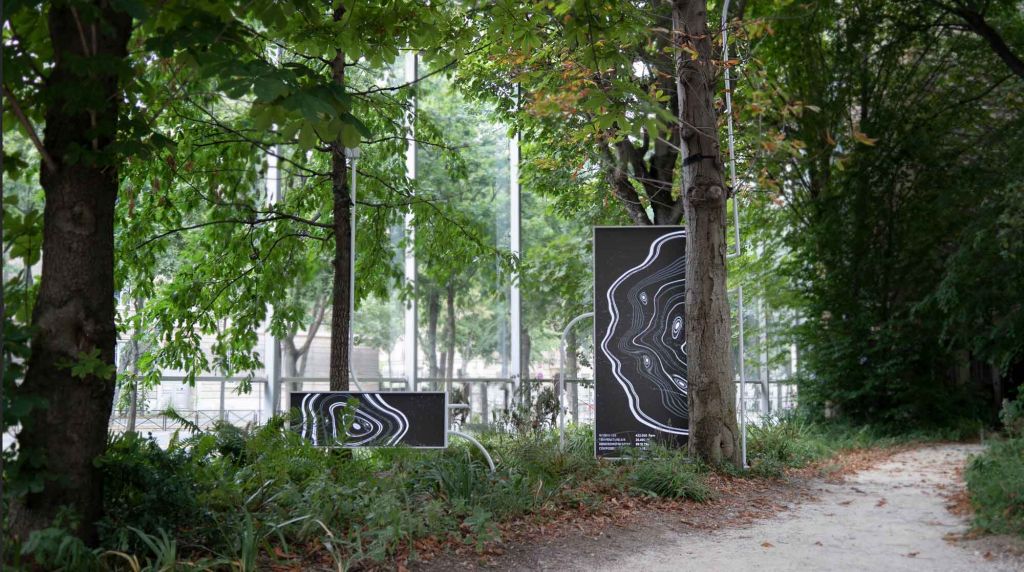
How did your career evolve, and when did ecology, technology and art meet?
As someone who tackles ecological and environmental issues, I always wanted to use art as a bridge between the knowledge gained by science and culture. To create work that translates these issues, I believe it’s best to respond, involve and interact with people, so I started to make work in the realm of immersive experiences and experiences that reflect our behaviour.
You work alongside scientists in what you called ‘a process of translating abstract data into art to make people feel the knowledge’ – how do you work on unfolding and making the transition happen and accessible to people?
All my work I make on the base of scientific research; I believe in a clear distinction between science and art, as these are two different ways to look at the world. But if you use science as a starting point, you make art you combine the two worlds at their best. As science and art tend to push societies further.
Your current project together with Stefano Mancuso, Econtinuum, is now on show at the Nxt Museum, Amsterdam. You previously worked together on the Symbiosa project – how did this collaboration start, and how is Econtinuum complementary to Symbiosa?
In the works Voice of Nature and Symbiosia I have talked about how we are impacting the ecosystem by letting nature speak for itself by showing the direct environmental impact on the growth patterns of nature. Econtinuum is using the symbiotic relationship between two trees to invite people back into the ecosystem. By teaching people how this works, it uncovers how counterintuitive we are working as a society.
Through the use of technology, you let plants speak for themselves about climate change (Voice Of Nature), turn people into trash (Plastic Reflectic) and warned them about the danger of reality distortion through the wrong use of data itself (Volverium) – how do you see the future of technology merging with art and how will this keep on affecting the artist and the audience in your opinion?
Technology and data, for me, are just today’s paint. It’s a tool to transform a message that transcends beyond the medium used. I think if the old pioneering artists were alive these days, they would do the same. As with my topic of awareness art or eco-art, I believe that art reflects on culture and wishes more artists would take up these important issues.
During the installation of your project Voice Of Nature, you mentioned people feeding the plant water only after they saw the most level sensors indicating the tree was actually thirsty, as a good demonstration of how we trust data more than our eyes these days. Have you witnessed other similar reactions to your installations, where data instinctively (or not) changed the behaviour of people?
With pollutive ends, I have seen the decline of cigarette butts in front of the Chinese shows rapidly; also, with Plastic Reflectic, I noticed a pattern where people start playfully and leave thoughtful about the topic of ocean plastics. I believe that this type of art should educate and illuminate people and empower them with knowledge in ways that they haven’t experienced yet.
In Pollutive Ends, you show the amount of pollution one cigarette butt will generate and how crucial every small act is – in your experience, did you witness people adopting a more holistic approach to their relationship with nature, understanding that ‘together we are stronger’?
I can’t speak for my viewers, but for me, it did, and I hope I take some people with me on this path.
What is the chief enemy of creativity?
The loss of truth. When there is confusion and chaos, creativity becomes obsolete.
You couldn’t live without….
My family.

